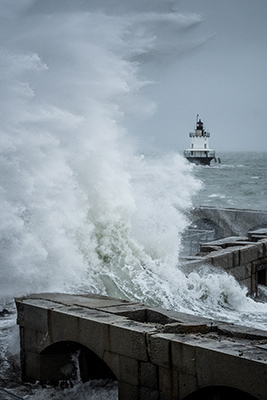
A view of Spring Point Ledge Light during the January 13, 2024 storm.
(Photo by Dominic Trapani)
Back to back winter storms on January 10 and 13, 2024 combined to cause extensive damage along the entire Maine coast, including at a number of lighthouses. The scope of destruction to coastal infrastructure was so widespread, it threatened to eclipse the fact that serious damage also occurred at remote lighthouse sites, which are out of the public eye.
The American Lighthouse Foundation (ALF) quickly mobilized its advocacy efforts in response to the damage and the urgent need to raise critical awareness for the plight of Maine’s lighthouses in the face of these unprecedented storms impacted by climate change.
At the same time, ALF worked to gather visible damage reports at many lighthouse sites, including flying by helicopter over twenty-three (23) light stations – most of which were located on offshore islands and ledges. Following the flight with Pine Tree Helicopters, Sanford, Maine, findings from the air inspection were shared with the appropriate lighthouse stewards to help expedite the storm damage assessment process.
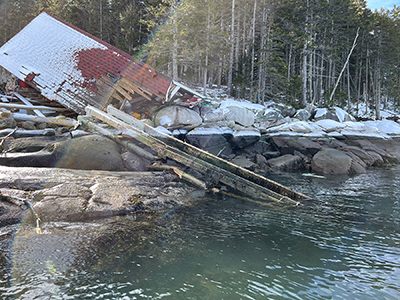
The storm on January 13, 2024 destroyed the historic boathouse at Whitehead Lighthouse.
(Photo courtesy of Whitehead Lighthouse)
A short video was created and shared far and wide to convey the extent of damage at Maine lighthouses. This video has proven to be an effective tool in demonstrating both the seriousness and urgency of the situation.
ALF has engaged both State and Federal agencies, as well as media outlets and preservation/environmental entities. We are working to shine a light on the fact that there is an overall lack of funding resources available to nonprofit lighthouse stewards for an effective/timely response to such emergencies.
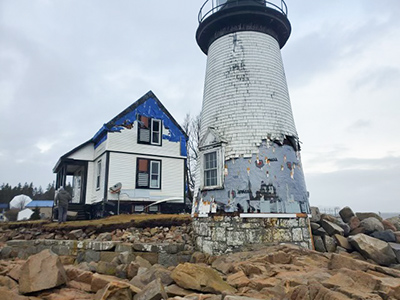
The 1891 Prospect Harbor Lighthouse was damaged during the January 2024 storms.
(Photo courtesy of the USCG)
The American Lighthouse Foundation is also proactively seeking to assemble preliminary information from lighthouse organizations statewide via a questionnaire regarding the damage to both historic light station structures and the assets/contents integral to the operations of the managing steward at these sites.
The information gathered from the storm damage questionnaire will be of invaluable assistance to estimating the full physical and financial impact of the storms, and will provide better insight into the types of harm suffered. Thereafter, the American Lighthouse Foundation will assist with the development of best practices for future storm preparations at Maine’s historic lighthouses, as well as the vital planning process for hazard mitigation.
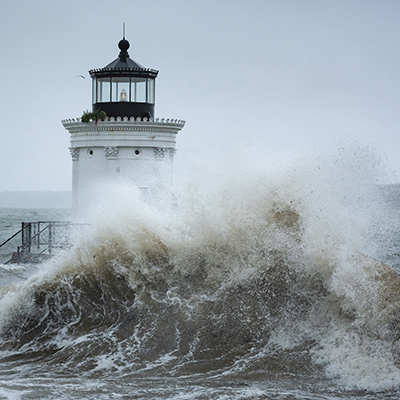
By working together, we enhance our chances of “leaving the light on” for posterity as we navigate the effects of climate change.
Bug Light in South Portland on 1/13/24.
(Photo by Dominic Trapani)
Ford Reiche, owner of Halfway Rock Lighthouse in Casco Bay, Maine, and Jeremy D’Entremont, Historian for the United States Lighthouse Society, have worked tirelessly with ALF Executive Director Bob Trapani, Jr. throughout this major undertaking. The concept of a team effort is shining bright in every aspect.
Those who serve as stewards of one or more of these irreplaceable Maine treasures do not want to see lighthouses “lost in the shuffle” of disaster relief in the present or future. Therefore the time to act is now. It is imperative that the importance of lighthouses to Maine’s historic resource inventory, economy, community fabric and the overall spirit of Maine, be conveyed and elevated effectively during this pressing time. By working together, we enhance our chances of “leaving the light on” for posterity as we navigate the effects of climate change.
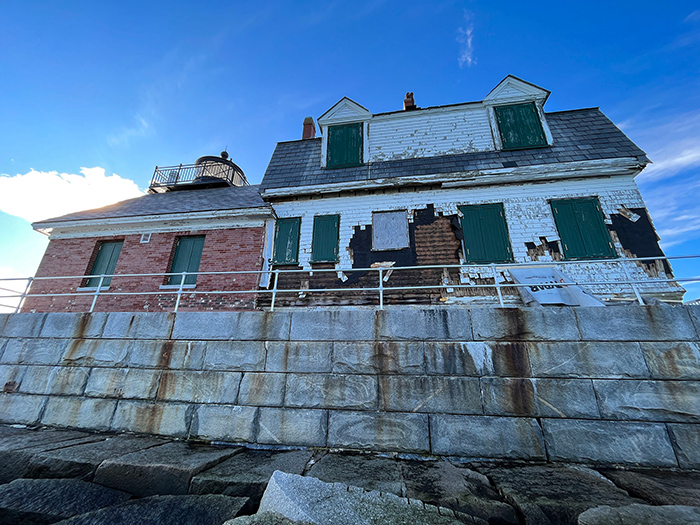
Rockland Breakwater Lighthouse suffered damage to the keeper’s house and boathouse during the January 2024 storms. (Photo by Bob Trapani, Jr.)
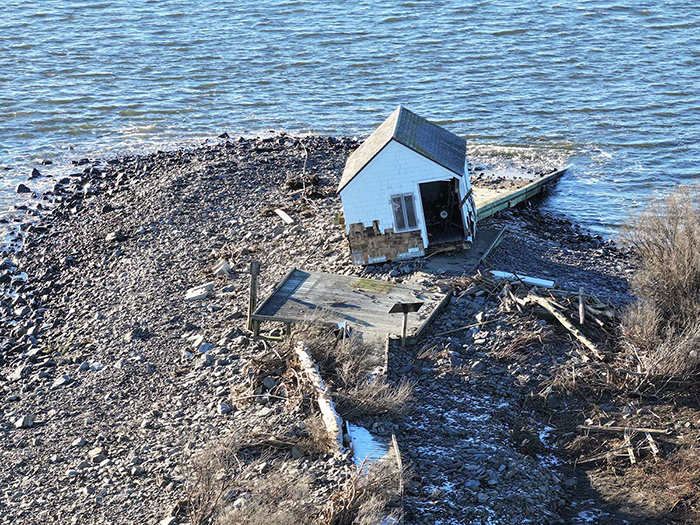
The historic boathouse at Wood Island Light Station was moved off its foundation some 20-feet during the January 2024 storms. (Photo by Josh McPhail)
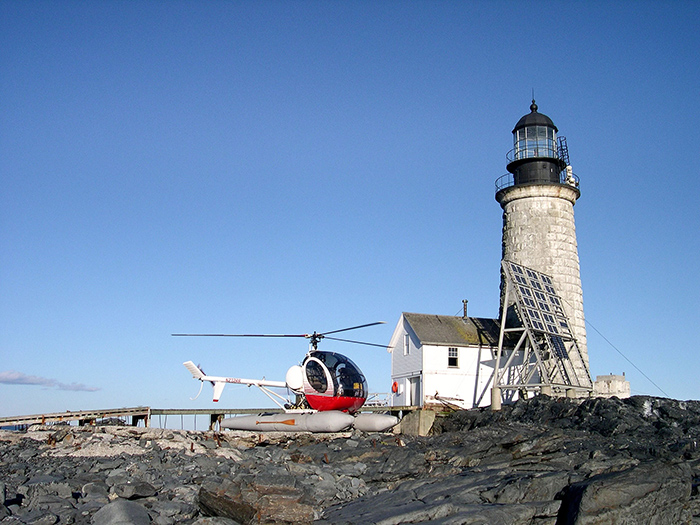
Halfway Rock Lighthouse in Casco Bay was one of the hardest hit stations. The wooden dwelling suffered extensive flooding and the boat ramp was badly damaged. (Photo by Ford Reiche)
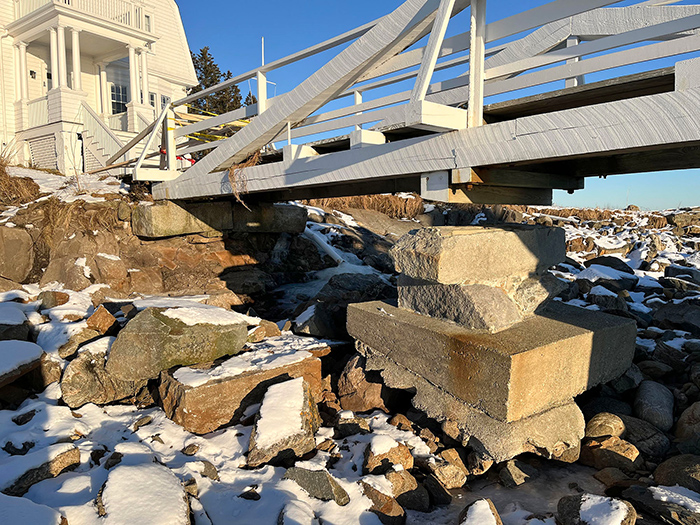
The wooden walkway at Marshall Point Light was damaged and its piers undermined by the storms. The site also suffered approximately four-feet of erosion.
(Photo courtesy of the Marshall Point Lighthouse & Museum)
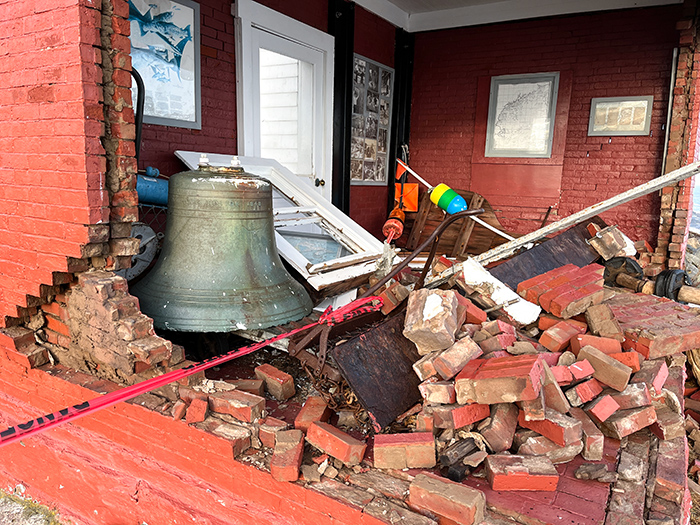
The brick structure for the bell tower at Pemaquid Point Light suffered extensive damage during the January 10, 2024 storm. The keeper’s house and grounds also suffered damage.
(Photo by Bob Trapani, Jr.)
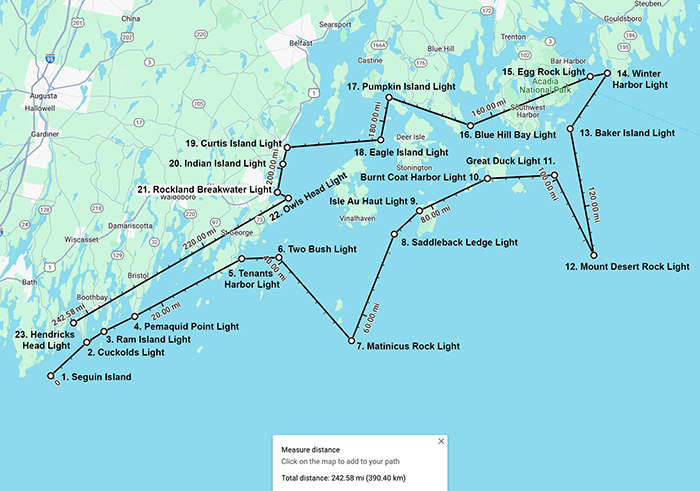
January 21, 2024 flight map to visually inspect 23 Maine lighthouses from the air by helicopter. (Graphic by Dominic Trapani)
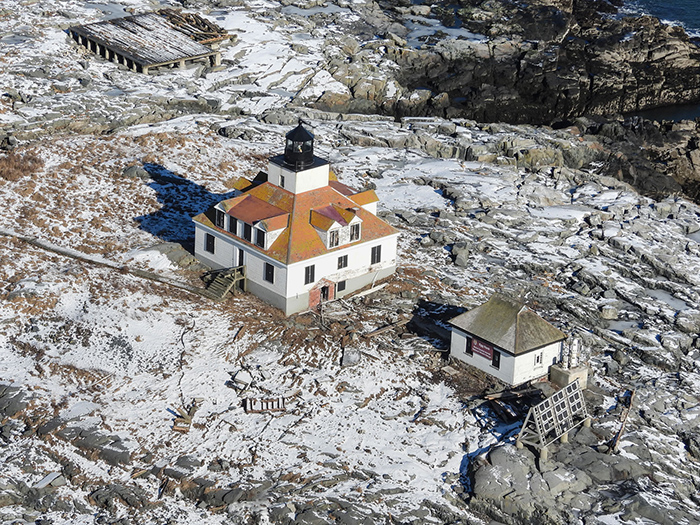
During the 1/21/24 helicopter flight to inspect storm damage, it was discovered that Egg Rock Light near Bar Harbor lost its seawall and suffered damage to the south and east sides of the lighthouse. (Photo by Bob Trapani, Jr.)

Parker Montano, owner of Pine Tree Helicopters, served as the pilot for the 23 lighthouse inspection flight. Parker was joined by Ford Reiche and Bob Trapani, Jr. The flight included Maine’s two most remote lighthouses – Matinicus Rock and Mount Desert Rock (shown here). (Photo by Bob Trapani, Jr.)

